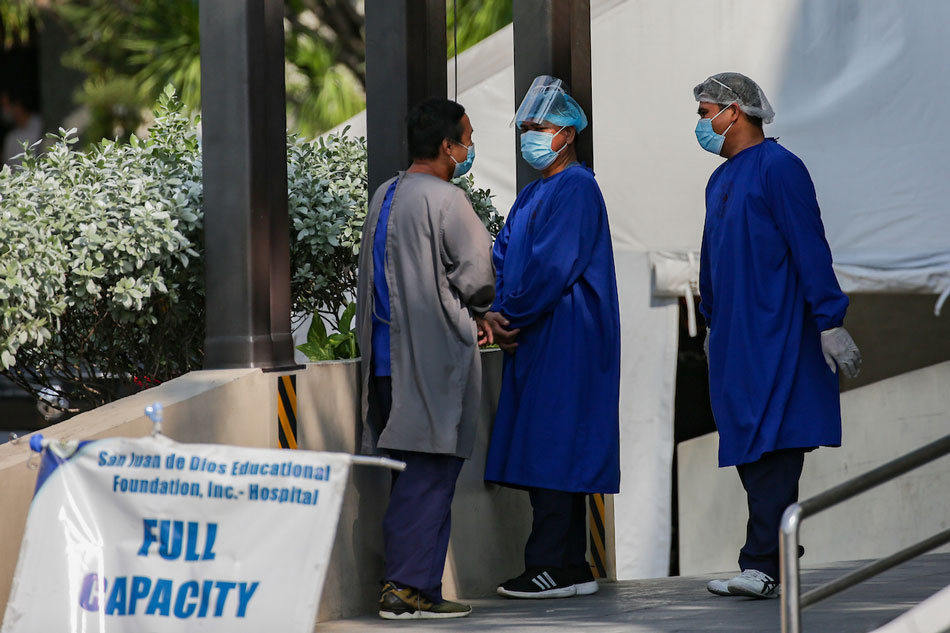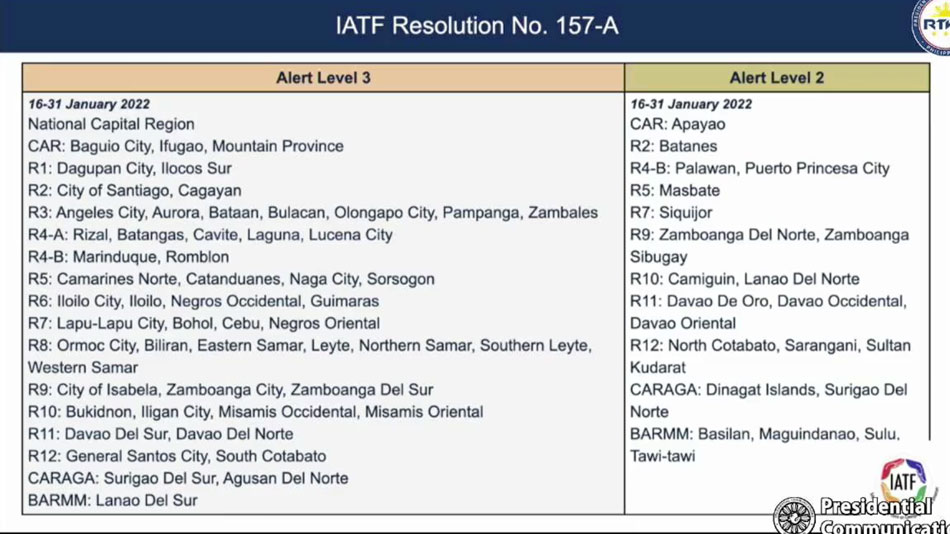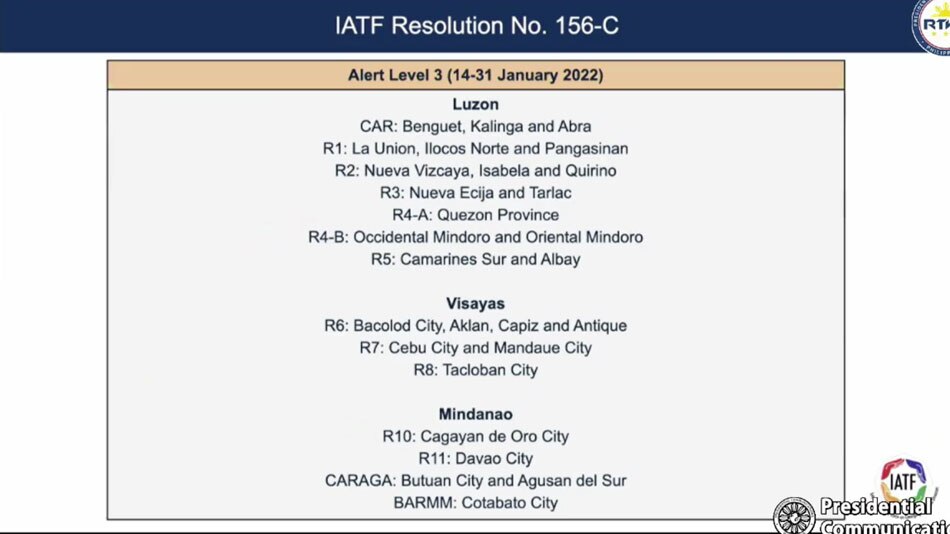Metro Manila, other areas to keep COVID-19 Alert 3 until end of January | ABS-CBN
ADVERTISEMENT

Welcome, Kapamilya! We use cookies to improve your browsing experience. Continuing to use this site means you agree to our use of cookies. Tell me more!
Metro Manila, other areas to keep COVID-19 Alert 3 until end of January
Metro Manila, other areas to keep COVID-19 Alert 3 until end of January
Jamaine Punzalan,
ABS-CBN News
Published Jan 14, 2022 12:35 PM PHT
|
Updated Jan 14, 2022 03:18 PM PHT
MANILA — (UPDATED) Metro Manila and several other areas will keep current restrictions against COVID-19 until the end of January, Malacañang said on Friday, even as coronavirus infections continued to climb.
MANILA — (UPDATED) Metro Manila and several other areas will keep current restrictions against COVID-19 until the end of January, Malacañang said on Friday, even as coronavirus infections continued to climb.
The capital region will stay under COVID-19 Alert 3 until Jan. 31, said Cabinet Secretary Karlo Nograles.
The capital region will stay under COVID-19 Alert 3 until Jan. 31, said Cabinet Secretary Karlo Nograles.
The third alert in a 5-level system bans face-to-face classes, contact sports, fun fairs, and casinos.
The third alert in a 5-level system bans face-to-face classes, contact sports, fun fairs, and casinos.
It also limited to fully vaccinated individuals and reduced to 30 percent the indoor operating capacity of dine-in services, religious gatherings, fitness studios, personal care services, and recreational venues.
Other areas under Alerts 3 and 2 from Jan. 16 to 31 include the following, Nograles said.
It also limited to fully vaccinated individuals and reduced to 30 percent the indoor operating capacity of dine-in services, religious gatherings, fitness studios, personal care services, and recreational venues.
Other areas under Alerts 3 and 2 from Jan. 16 to 31 include the following, Nograles said.
ADVERTISEMENT
Government earlier announced the following areas would be under Alert 3 from Jan. 14 to 31.
Government earlier announced the following areas would be under Alert 3 from Jan. 14 to 31.
No area in the country is currently under Alert 4. This alert level is raised if at least 71 percent of an area's healthcare capacity has been used, said Nograles.
No area in the country is currently under Alert 4. This alert level is raised if at least 71 percent of an area's healthcare capacity has been used, said Nograles.
Metro Manila has used 58 percent of ICU beds, 54 percent of isolation beds, and 66 percent of ward beds as of Thursday, based on Nograles' slide show.
Metro Manila has used 58 percent of ICU beds, 54 percent of isolation beds, and 66 percent of ward beds as of Thursday, based on Nograles' slide show.
Authorities are making sure that hospital beds are “reserved to those who need it most,” including the elderly, people with comorbidity, and patients with severe or critical COVID-19, said the Palace official.
Authorities are making sure that hospital beds are “reserved to those who need it most,” including the elderly, people with comorbidity, and patients with severe or critical COVID-19, said the Palace official.
Patients who have mild symptoms or are asymptomatic should be brought to isolation facilities or can quarantine at home and tap telemedicine, Nograles said.
The Philippines on Thursday reported a record-high 34,021 new COVID-19 cases, raising the country's total confirmed infections to 3,092,409, data from the Department of Health showed.
Patients who have mild symptoms or are asymptomatic should be brought to isolation facilities or can quarantine at home and tap telemedicine, Nograles said.
The Philippines on Thursday reported a record-high 34,021 new COVID-19 cases, raising the country's total confirmed infections to 3,092,409, data from the Department of Health showed.
The positivity rate was at record-high 47.9 percent, nearly tenfold the World Health Organization's 5 percent positivity rate benchmark.
The positivity rate was at record-high 47.9 percent, nearly tenfold the World Health Organization's 5 percent positivity rate benchmark.
Read More:
coronavirus
COVID
COVID-19
COVID19
COVID Philippines
COVID updates
COVID latest Philippines
COVID variant
omicron
COVID alert
ADVERTISEMENT
ADVERTISEMENT





